Tactical breakdown: How Portsmouth beat Sunderland at their own game and the areas where the game was lost
and live on Freeview channel 276
Rather than solely focusing on containing the in-form Black Cats, Kenny Jackett’s side identified areas in which they felt they could cause their hosts some real problems.
What Pompey’s performance did was expose some potential areas of concern for the Black Cats and their tactical approach which, while far from disastrous, could require some subtle tweaks in the coming weeks.
Advertisement
Hide AdAdvertisement
Hide AdHere, we break down those areas to look at how Portsmouth nullified Sunderland, the areas they managed to exploit and what this means moving forward:
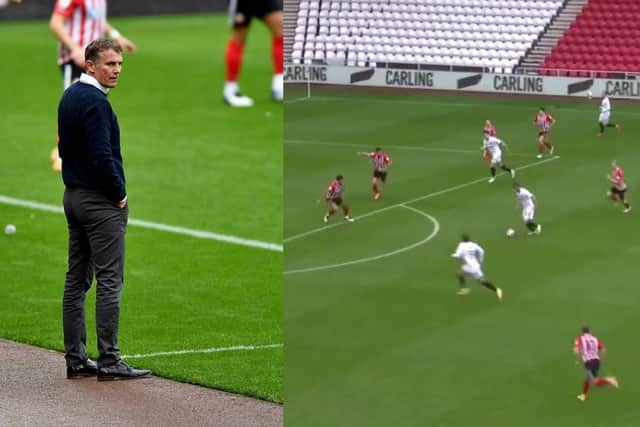

THE POMPEY PRESS
A key part of Sunderland’s game under Phil Parkinson has been their high-energy press.
We’ve seen just how well that can work in the last eight days, with Swindon and Crewe - two teams who like to play out from the back - struggling to do so against the Black Cats’ aggressive pressing.
Yet in this clash, that was turned entirely on its head.
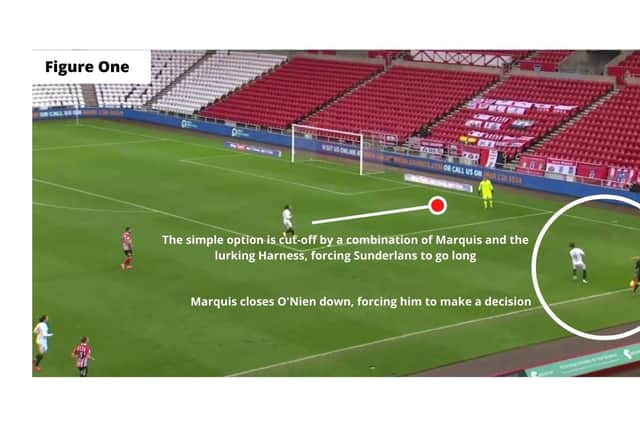

Sunderland were the side looking to play out from the back, and it was Portsmouth who were denying them the opportunity to do so.
Advertisement
Hide AdAdvertisement
Hide AdJackett essentially turned Parkinson’s game plan against him, and to great effect.
Portsmouth’s press was precise and effective. They picked their moments well and were in a position to capitalise on any Sunderland errors (more on that later).
They stopped the Black Cats playing out from the back as they have so often done, and key to that were the front two of John Marquis and Marcus Harness.
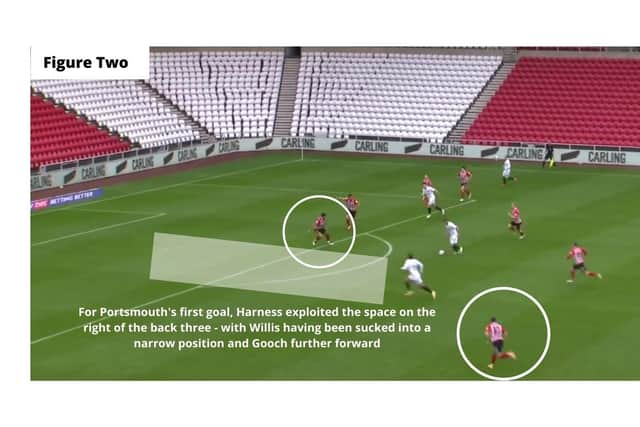

As shown in Figure One, we can see Marquis closing down Luke O’Nien while in possession while Harness lurks in order to cut-off the simple pass back to the goalkeeper.
Advertisement
Hide AdAdvertisement
Hide AdIt may seem a simple ploy, but few teams execute it well - and that essentially left O’Nien’s options limited, allowing the visitors to regain possession in an advanced area.
Plenty of teams have tried this in the past, but few have done it as well as Pompey.
What it highlighted in terms of the Sunderland side is that they struggle to play out of an aggressive high press (they are far from alone in this regard, as there are plenty of teams who struggle to consistently play out of an effective press, hence why so many teams try to utilise it).
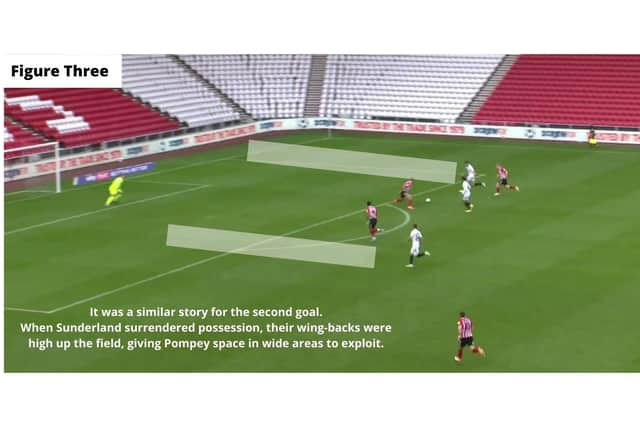

When teams do utilise this approach - as more will undoubtedly do in the coming weeks - an alternative approach may be needed.
Advertisement
Hide AdAdvertisement
Hide AdThat could be some of the midfield players dropping deeper to offer additional options, or an understanding that a slightly more direct approach may at times be required to play out of the press.
PICKING THE POCKETS
One of the obvious dangers of playing with a back three in the manner which Sunderland do is that teams can find space in the wide areas.
It’s true to any team playing this system - and not just Sunderland - that with wing-backs committed forward, intelligent teams can have joy out wide on the break.
This is something that Sunderland have generally dealt with well, with their back three able to mop up balls in the wide area and nullify any real threat on the break.
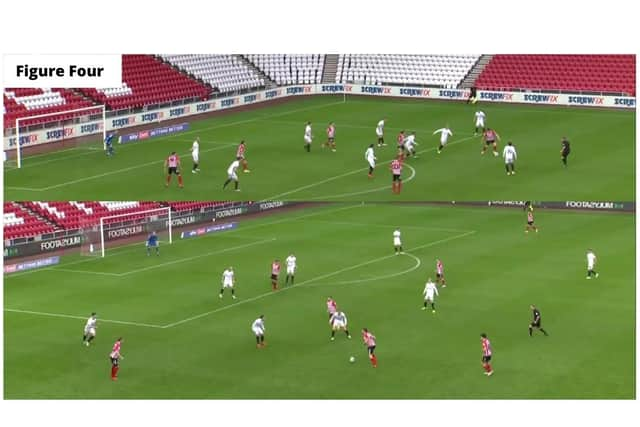

Advertisement
Hide AdAdvertisement
Hide AdBut that wasn’t always the case against Pompey, where the visitors were able to exploit the pockets of space between the wing-backs and the wide centre-halves to good effect.
Pompey recognised this was a potential area they could benefit from and focused much of their passing in a central area - rather than look out wide. Indeed, Jackett’s side only delivered two crosses all game, perhaps recognising the Black Cats’ strength at defending balls from out wide, and instead focused their efforts down the middle and trying to get behind the back three.
The visiting wide players, Ryan Williams and Michael Jacobs, played fairly narrowly and their heatmaps show they spent a large percentage of the game in a more central area than hugging the touchline.
What that did was allowed them to help exploit those pockets - by stretching the Sunderland backline and creating space for others to attack, particularly on the break.
Advertisement
Hide AdAdvertisement
Hide AdYou can see in Figure 2 and Figure 3 how, having caught the Black Cats napping, Pompey players recognised that space and attacked it.
It was in this area that Marcus Harness found space to net the first, and similarly where John Marquis was able to ghost into the area for the second.
So what does this mean for Sunderland?As previously mentioned, the Black Cats have generally dealt with these situations well in recent weeks and there will be few teams with the quick-thinking to exploit such opportunities when they present themselves.
It’s an area to keep an eye on, but is by no means a glaring weak spot.
NULLIFYING SUNDERLAND’S THREATS
Advertisement
Hide AdAdvertisement
Hide AdWhile Portsmouth were expansive going forward, they were far more rigid at the back.
Their 4-4-2 shape allowed them to get bodies behind the ball and frustrate Sunderland - who struggled to carve a way through the stubborn backline.
As shown in Figure Four, the visitors spent much of the second half defending in two banks of four while challenging the Black Cats to play through them – something they struggled to do.
Only when Denver Hume drove at the opposition defence did Sunderland look like cutting through their opponents, with the Black Cats mustering just one shot on target all game – Charlie Wyke’s goal.
Advertisement
Hide AdAdvertisement
Hide AdWhile the lack of clear-cut chances can somewhat be attributed to Pompey’s resolute defending, some questions must be asked of Sunderland’s decision making at times.
Their play was often ponderous in the final third while some aspects of decision-making could also be questioned.
The conclusion? Sunderland need a bit more of Plan B to unlock teams when they stubbornly sit back. It was an issue at times last season, and here’s hoping it doesn't develop into one again this term.
But let’s not get too carried away – Sunderland have, for the most part this season, created plenty in the final third.
Advertisement
Hide AdAdvertisement
Hide AdIt’s not a case of ripping-up the game plan just yet, but some tweaks to allow the Black Cats to find a way through some of the more resolute defences may be required.
A message from the Football Clubs Editor:
Our aim is to provide you with the best, most up-to-date and most informative Sunderland AFC coverage 365 days a year.
This depth of SAFC coverage costs, so to help us maintain the high-quality reporting that you are used to, please consider taking out a subscription to our new sports-only package here.
Your support is much appreciated.
Richard Mennear, Football Clubs Editor